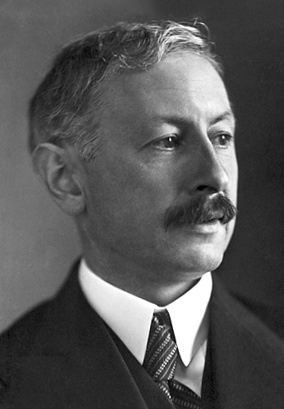|
Bernhard Witkop
Bernhard Witkop (May 9, 1917 in Freiburg, Baden – November 22, 2010 in Chevy Chase, Maryland) was a German-born American organic chemist who worked for the National Institutes of Health (NIH) for 37 years. During those years, Dr. Witkop – along with his recruit, the late Dr. John Daly, and others – discovered the NIH shift, a term describing the movement of hydrogen, deuterium or tritium to adjacent carbons on aromatic rings during oxidation, a process key in developing many therapies. He also helped to develop selective methods for the non-enzymatic cleavage of proteins, which enabled the sequencing of amino acids in proteins as large as immunoglobulin, a method later used in the production of human insulin. Dr. Witkop also helped pioneer the NIH Visiting Fellow Program. Among other foreign scientists, he began attracting visiting researchers to the program from Japan as early as 1955. He traveled frequently to Japan, where he gave talks in classical Japanese. In 1975 ... [...More Info...] [...Related Items...] OR: [Wikipedia] [Google] [Baidu] |
Simple Aromatic Ring
Simple aromatic rings, also known as simple arenes or simple aromatics, are aromatic organic compounds that consist only of a conjugated planar ring system. Many simple aromatic rings have trivial names. They are usually found as substructures of more complex molecules (" substituted aromatics"). Typical simple aromatic compounds are benzene, indole, and pyridine. Simple aromatic rings can be heterocyclic if they contain non-carbon ring atoms, for example, oxygen, nitrogen, or sulfur. They can be monocyclic as in benzene, bicyclic as in naphthalene, or polycyclic as in anthracene. Simple monocyclic aromatic rings are usually five-membered rings like pyrrole or six-membered rings like pyridine. Fused/condensed aromatic rings consist of monocyclic rings that share their connecting bonds. Heterocyclic aromatic rings The nitrogen (N)-containing aromatic rings can be separated into basic aromatic rings that are easily protonated, and form aromatic cations and salts (e.g., pyridin ... [...More Info...] [...Related Items...] OR: [Wikipedia] [Google] [Baidu] |
List Of Members Of European Academy Of Sciences And Arts
This is a list of members of European Academy of Sciences and Arts. I – Humanities II – Medicine III – The arts IV – Natural sciences V – Social sciences, law and economics VI – Technical and environmental sciences VII – World religions References External linksMembersat European Academy of Sciences and Arts The European Academy of Sciences and Arts (EASA, la, Academia Scientiarum et Artium Europaea) is a transnational and interdisciplinary network, connecting about 2,000 recommended scientists and artists worldwide, including 37 Nobel Prize laure ... {{DEFAULTSORT:European Academy of Sciences and Arts Science-related lists Arts-related lists Lists of members of learned societies ... [...More Info...] [...Related Items...] OR: [Wikipedia] [Google] [Baidu] |
United States Public Health Service
The United States Public Health Service (USPHS or PHS) is a collection of agencies of the Department of Health and Human Services concerned with public health, containing nine out of the department's twelve operating divisions. The Assistant Secretary for Health oversees the PHS. The Public Health Service Commissioned Corps (PHSCC) is the federal uniformed service of the PHS, and is one of the eight uniformed services of the United States. PHS had its origins in the system of marine hospitals that originated in 1798. In 1871 these were consolidated into the Marine Hospital Service, and shortly afterwards the position of Surgeon General and the PHSCC were established. As the system's scope grew to include quarantine authority and research, it was renamed the Public Health Service in 1912. A series of reorganizations in 1966–1973 began a shift where PHS' divisions were promoted into departmental operating agencies. PHS was established as a thin layer of hierarchy above ... [...More Info...] [...Related Items...] OR: [Wikipedia] [Google] [Baidu] |
Nobel Prize
The Nobel Prizes ( ; sv, Nobelpriset ; no, Nobelprisen ) are five separate prizes that, according to Alfred Nobel's will of 1895, are awarded to "those who, during the preceding year, have conferred the greatest benefit to humankind." Alfred Nobel was a Swedish chemist, engineer, and industrialist most famously known for the invention of dynamite. He died in 1896. In his will, he bequeathed all of his "remaining realisable assets" to be used to establish five prizes which became known as "Nobel Prizes." Nobel Prizes were first awarded in 1901. Nobel Prizes are awarded in the fields of Physics, Chemistry, Physiology or Medicine, Literature, and Peace (Nobel characterized the Peace Prize as "to the person who has done the most or best to advance fellowship among nations, the abolition or reduction of standing armies, and the establishment and promotion of peace congresses"). In 1968, Sveriges Riksbank (Sweden's central bank) funded the establishment of the Prize in Economi ... [...More Info...] [...Related Items...] OR: [Wikipedia] [Google] [Baidu] |
University Of Munich
The Ludwig Maximilian University of Munich (simply University of Munich or LMU; german: Ludwig-Maximilians-Universität München) is a public research university in Munich, Germany. It is Germany's List of universities in Germany, sixth-oldest university in continuous operation. Originally University of Ingolstadt, established in Ingolstadt in 1472 by Louis IX, Duke of Bavaria, Duke Ludwig IX of Bavaria-Landshut, the university was moved in 1800 to Landshut by Maximilian I Joseph of Bavaria, King Maximilian I of Bavaria when the city was threatened by the French, before being relocated to its present-day location in Munich in 1826 by Ludwig I of Bavaria, King Ludwig I of Bavaria. In 1802, the university was officially named Ludwig-Maximilians-Universität by King Maximilian I of Bavaria in honor of himself and Ludwig IX. LMU is currently the second-largest university in Germany in terms of student population; in the 2018/19 winter semester, the university had a total of 51,606 m ... [...More Info...] [...Related Items...] OR: [Wikipedia] [Google] [Baidu] |
University Of Zurich
The University of Zürich (UZH, german: Universität Zürich) is a public research university located in the city of Zürich, Switzerland. It is the largest university in Switzerland, with its 28,000 enrolled students. It was founded in 1833 from the existing colleges of theology, law, medicine which go back to 1525, and a new faculty of philosophy. Currently, the university has seven faculties: Philosophy, Human Medicine, Economic Sciences, Law, Mathematics and Natural Sciences, Theology and Veterinary Medicine. The university offers the widest range of subjects and courses of any Swiss higher education institution. History The University of Zurich was founded on April 29, 1833, when the existing colleges of theology, the ''Carolinum'' founded by Huldrych Zwingli in 1525, law and medicine were merged with a new faculty of Philosophy. It was the first university in Europe to be founded by the state rather than a monarch or church. In the university's early years, the 183 ... [...More Info...] [...Related Items...] OR: [Wikipedia] [Google] [Baidu] |
Paul Karrer Gold Medal
The Paul Karrer Gold Medal and Lecture is awarded annually or biennially by the University of Zurich to an outstanding researcher in the field of chemistry. It was established in 1959 by a group of leading companies, including CIBA AG, J.R. Geigy, F. Hoffmann-La Roche & Co. AG, Sandoz AG, Société des Produits Nestlé AG and Dr. A. Wander AG, to honour the Swiss organic chemist and Nobel laureate Paul Karrer on his 70th birthday. The Medal was created by Swiss sculptor Hermann Hubacher; the obverse depicts a relief of Paul Karrer and the reverse is engraved with the words University of Zurich - Paul Karrer Lecture. The lecture itself is delivered at the University of Zurich. The recipients to date (2015) have represented most of the important research institutions of Europe and the USA and include nine Nobel Prize winners for chemistry or medicine. Recipients SourceUniversity of Zurich See also *List of chemistry awards *Prizes named after people A prize is an award to ... [...More Info...] [...Related Items...] OR: [Wikipedia] [Google] [Baidu] |
American Philosophical Society
The American Philosophical Society (APS), founded in 1743 in Philadelphia, is a scholarly organization that promotes knowledge in the sciences and humanities through research, professional meetings, publications, library resources, and community outreach. Considered the first learned society in the United States, it has about 1,000 elected members, and by April 2020 had had only 5,710 members since its creation. Through research grants, published journals, the American Philosophical Society Museum, an extensive library, and regular meetings, the society supports a variety of disciplines in the humanities and the sciences. Philosophical Hall, now a museum, is just east of Independence Hall in Independence National Historical Park; it was designated a National Historic Landmark in 1965. History The Philosophical Society, as it was originally called, was founded in 1743 by Benjamin Franklin, James Alexander (lawyer), James Alexander, Francis Hopkinson, John Bartram, Philip Syn ... [...More Info...] [...Related Items...] OR: [Wikipedia] [Google] [Baidu] |
National Academy Of Sciences
The National Academy of Sciences (NAS) is a United States nonprofit, non-governmental organization. NAS is part of the National Academies of Sciences, Engineering, and Medicine, along with the National Academy of Engineering (NAE) and the National Academy of Medicine (NAM). As a national academy, new members of the organization are elected annually by current members, based on their distinguished and continuing achievements in original research. Election to the National Academy is one of the highest honors in the scientific field. Members of the National Academy of Sciences serve '' pro bono'' as "advisers to the nation" on science, engineering, and medicine. The group holds a congressional charter under Title 36 of the United States Code. Founded in 1863 as a result of an Act of Congress that was approved by Abraham Lincoln, the NAS is charged with "providing independent, objective advice to the nation on matters related to science and technology. ... to provide scien ... [...More Info...] [...Related Items...] OR: [Wikipedia] [Google] [Baidu] |
Order Of The Sacred Treasure
The is a Japanese order, established on 4 January 1888 by Emperor Meiji as the Order of Meiji. Originally awarded in eight classes (from 8th to 1st, in ascending order of importance), since 2003 it has been awarded in six classes, the lowest two medals being abolished that year. Originally a male-only decoration, the order has been made available to women since 1919. The Order of the Sacred Treasure, which had 8 ranks until 2003, was awarded as a slightly lower rank than the Order of the Rising Sun for men and the Order of the Precious Crown for women. For example, the 1st class of the Order of the Sacred Treasure has been treated as between the 1st class and the 2nd class of the Order of the Rising Sun and the Order of the Precious Crown, and the 2nd class of the Order of the Sacred Treasure has been treated as between the 2nd class and the 3rd class of the Order of the Rising Sun and the Order of the Precious Crown. [...More Info...] [...Related Items...] OR: [Wikipedia] [Google] [Baidu] |
Human Insulin
As a medication, insulin is any pharmaceutical preparation of the protein hormone insulin that is used to treat high blood glucose. Such conditions include type 1 diabetes, type 2 diabetes, gestational diabetes, and complications of diabetes such as diabetic ketoacidosis and hyperosmolar hyperglycemic states. Insulin is also used along with glucose to treat hyperkalemia (high blood potassium levels). Typically it is given by injection under the skin, but some forms may also be used by injection into a vein or muscle. There are various types of insulin, suitable for various time spans. The types are often all called ''insulin'' in the broad sense, although in a more precise sense, insulin is identical to the naturally occurring molecule whereas insulin analogues have slightly different molecules that allow for modified time of action. It is on the World Health Organization's List of Essential Medicines. In 2020, regular human insulin was the 307th most commonly prescribed medicat ... [...More Info...] [...Related Items...] OR: [Wikipedia] [Google] [Baidu] |




